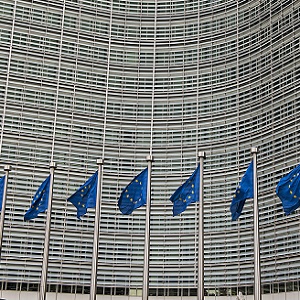3 steps to PSD2 – is your bank ready for the change?
At start of 2018, Member States of the European Union are to adapt new laws, due to compliance with the PSD2 (2nd Payment Services Directive). Electronic banking and payment services will be introduced to necessary regulations, mostly concerned with security issues and product innovation. We are facing the transformation of the entire market. It is the moment for banks to seize the opportunity for further development.
According to Avoka, global market of traditional financial institutions is digitising slowly. Only some of the banking services are on-line, not to mention availability in mobile channels. Even if the banks can attract customers, it is becoming increasingly difficult to keep them. Some number of banks decided to change their sales and customer service strategies, mixing digital and analogue sales channels to enhance their customers experience and to activate them.
Are the banks in Europe going to move on, towards the culture of openness? Will they show us new quality with regulations upon them? Are they going to push innovation? Or perhaps, will they lose the battle, by remaining closed or opening up just as much as they have to? How can they deal with the big change?
A strategy for an open bank
The most important is an in-depth analysis of the bank’s or other financial institution’s business model. The organisation needs to state its goals. It should pay close attention to the customers, both current and prospective, whom are to be reached in the upcoming years. Banks shall analyse their purchasing decisions and habits, look closely at innovative financial instruments clients are using elsewhere. Special attention should be paid to data volumes, soon opened to Third Party Providers (TPPs) due to PSD2 guidelines. Banks shall plan their product strategy for at least a year ahead and look beyond that, when it comes to overall company strategy.
Some of the institutions will conservatively focus on adapting their existing infrastructure to the Directive’s requirements. However, the market will belong to those, who go an extra mile at the planning stage. And whose managers perceive change as an opportunity, not a nuisance.
Collaboration with new units, defined in PSD2 as AISPs (Account Initiation Service Provider) and PISP (Payment Initiation Service Provider), or registering as such, will become a bank’s driver to develop worthy services and products. Banks actually need to become AISPs and PISPs, if they want to maintain control over at least some of their services. Moreover, due to the higher flexibility demand and in the face of constant changes, banks will be forced to expand their technological resources constantly. Only by doing so, they will meet the requirements of the virtual and distributed market.
The customers rarely go to the bank’s website, where they are tempted by the bank’s offer.The PSD2 Directive will open up the market for banking service aggregators, loan comparison engines and other banking services, not served by banks anymore. We already use and appreciate this kind of services. Examples might include SkyScanner or courier service comparisons. Banks will have to give access to their products using an open API (Application Programming Interface), collaborate with new services’ providers, develop own software and hope that their offer will remain attractive in highly competitive environment.
Stay up-to-date with API economy
Subsribe to APILOGIC newsletter and get the latest news on innovations in the financial sector.
[FM_form id=”3″]
Surveying the needs and opportunities
When adapting the bank for the PSD2 Directive, overall audit of IT infrastructure is the key phase of the process. Quite commonly, banks are institutions established dozens or even hundreds years ago. They bear marks of all past technological and regulatory changes. Applications and systems landscape in such banks is often very complex. Which is why it is crucial to determine how many elements are to be integrated under an open API, what data will be fetched, and which elements limited only to the bank’s ecosystem. This will allow timeline establishing, process model emerging and resources planning, necessary when implementing new structure. “The change plan” should not only enable services as required by PSD2 Directive, but all of the bank’s services – if not straight away, then in scheduled time in the future. Because in only few years, API will become main sales channel for banking products.
Implementation and development
Before the Directive enters into force, banks have several options available. They may expand their IT departments to handle software issues themselves. However, such decision may actually cause the bank to lag behind the competition. Even, if some parts of the software will be outsourced. It is not enough time left until the changes enter into force. Moreover, it is already being said, that PSD2 directive will finish off some of the banks.
Therefore, finding a technology partner with experience in shaping IT systems for financial organisations seems to be a wise choice. Such partner should carry out an audit in close relation with the bank’s IT department, and help to plan next steps.
The advisory function of a selected technology partner or a fintech company cannot be underestimated: the perspective of market practitioners will have a positive impact on the implementation process, as well as evolution of the bank’s offer. It will provide strong support where it comes to company savings and innovation design – and that is exactly what the Directive is about.
Open Bank – our recommendation
The best model, when adapting to new market regulations for banking and payment services, is adding the ready-made API Management solutions (such as Apilogic Open Banking API) to the existing technological landscape. This model lowers the TCO metrics in the same time. A proper configuration and integration of API Management (asynchronous, as is pointed out in the PSD2) with the bank’s services, will enable bank to provide new secure channels to its customers. What is worth remembering, is that API management components allow further expansion in the future. Future, where the API channel is mainly responsible for the financial sector’s revenue.



 Polski
Polski